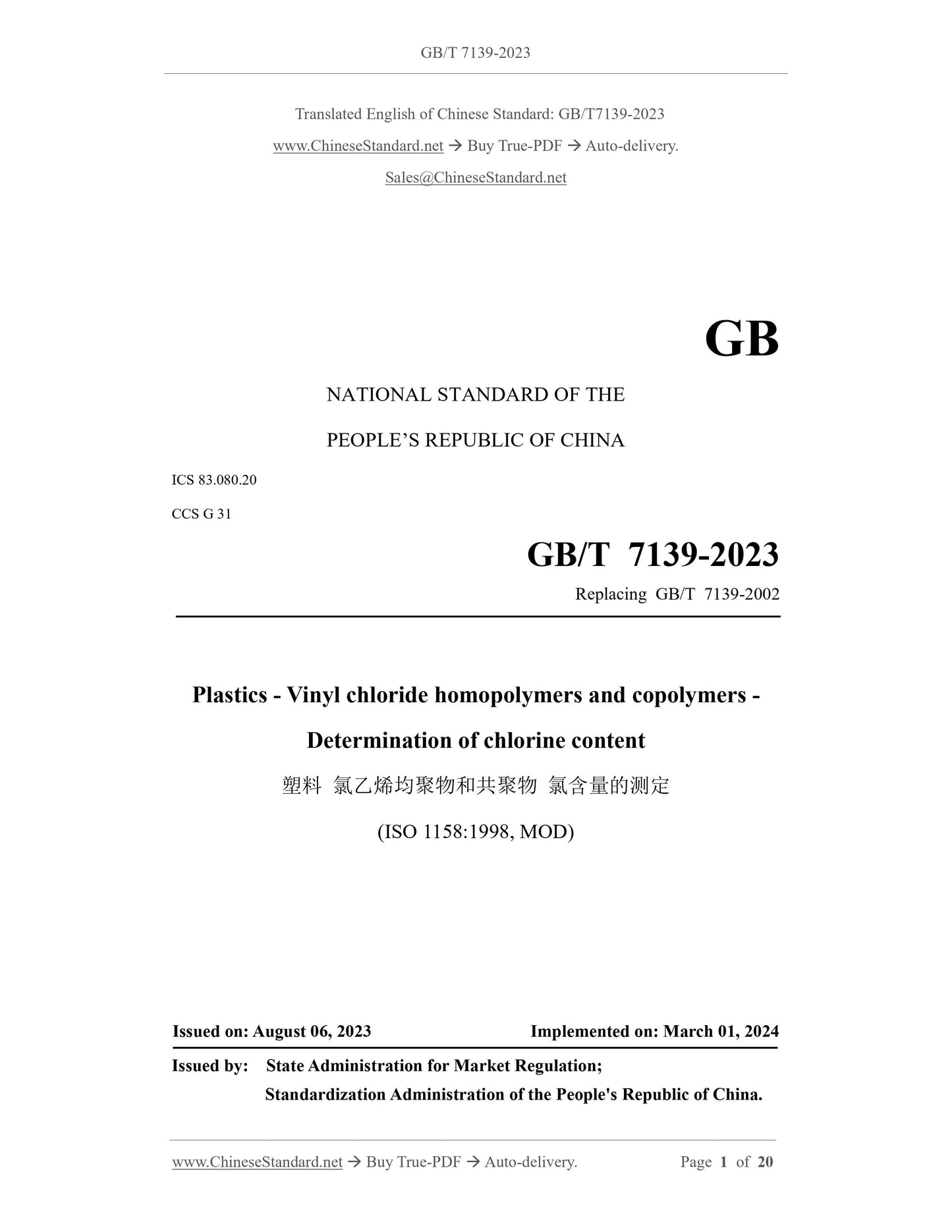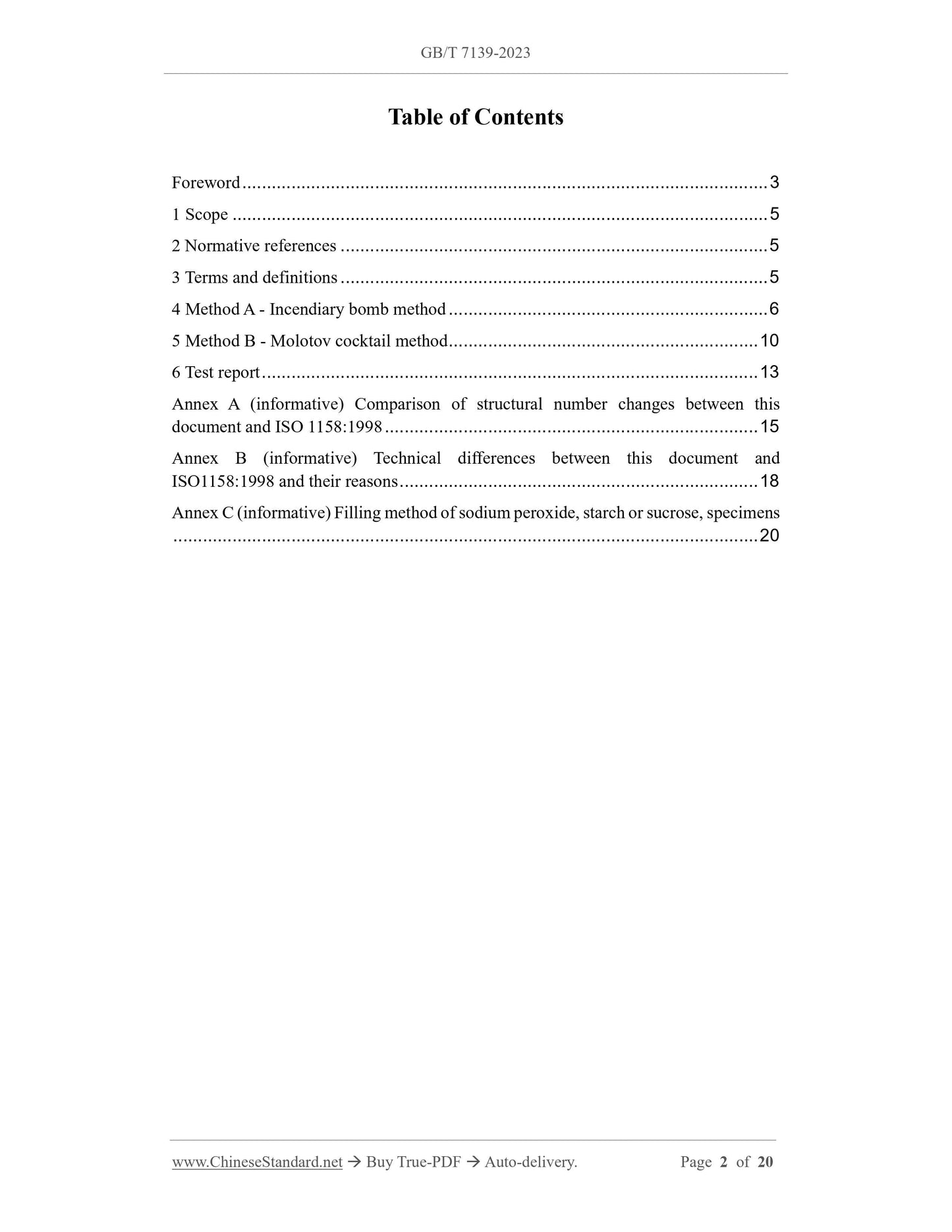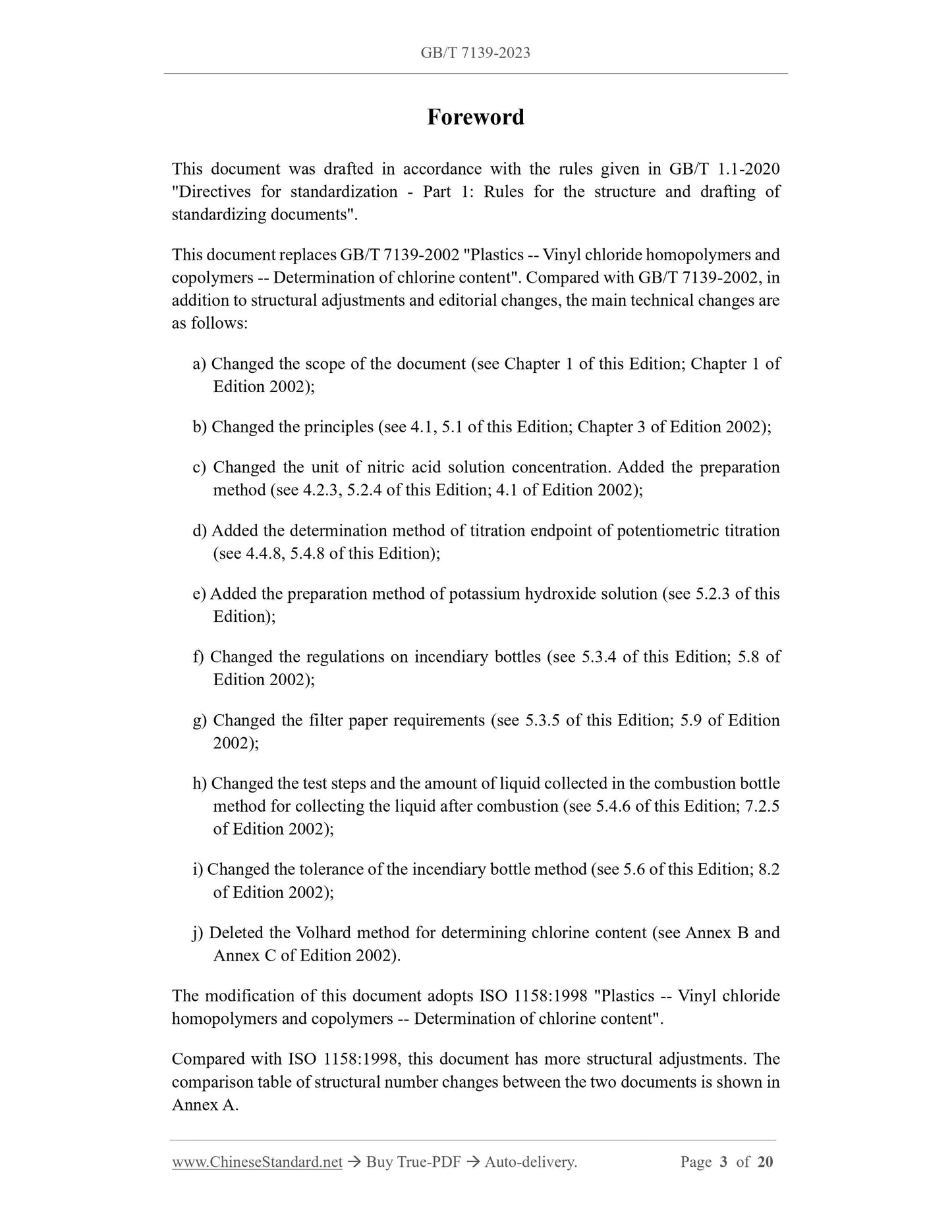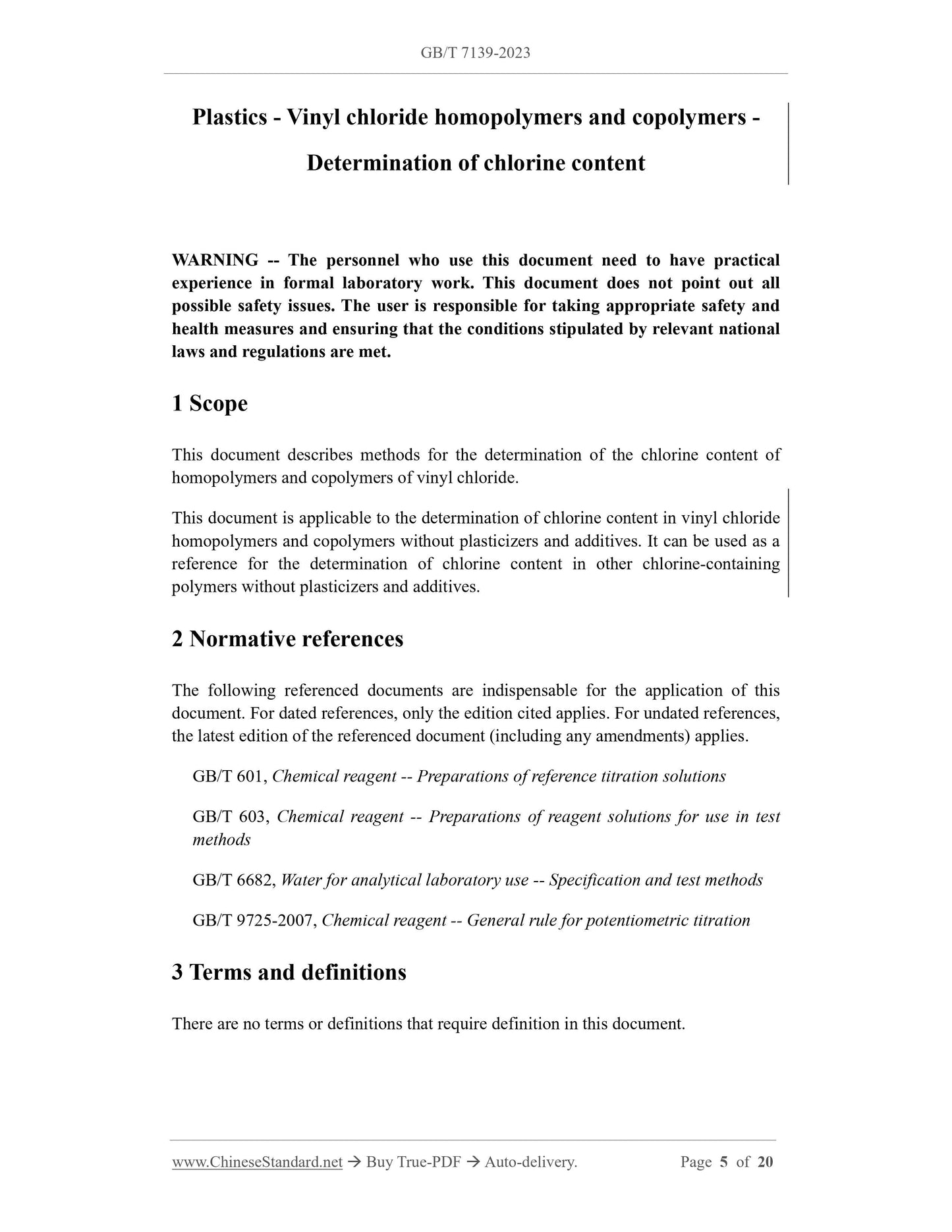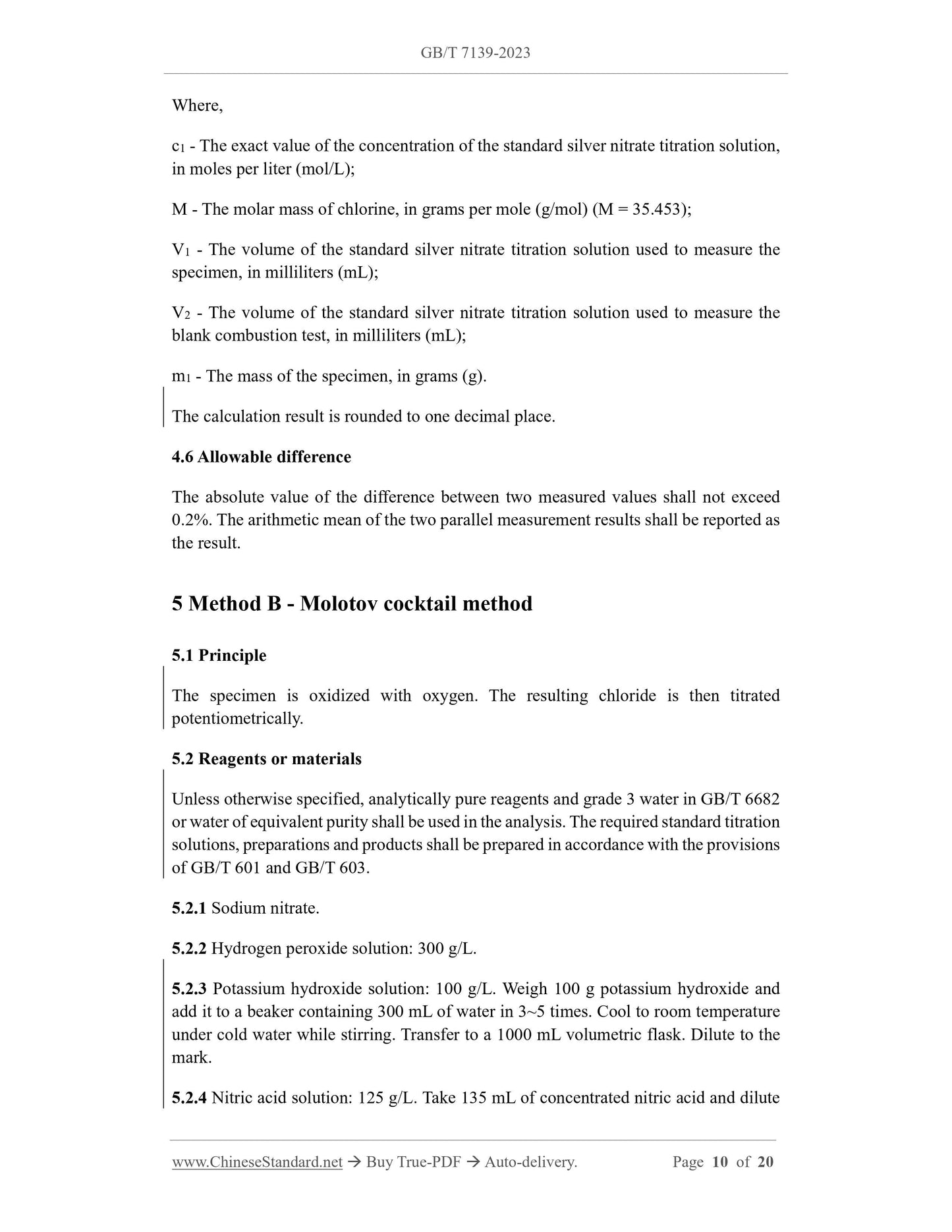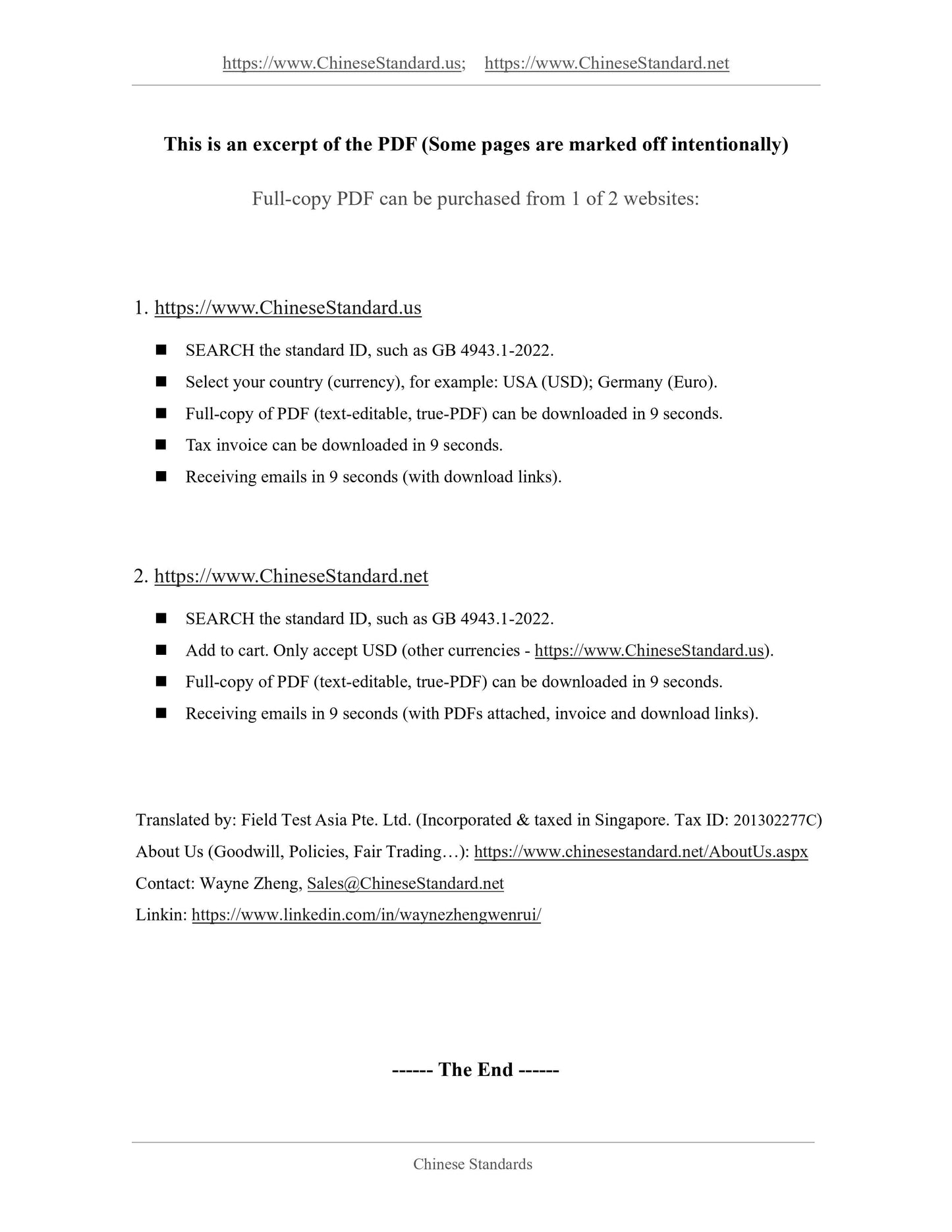1
/
of
7
www.ChineseStandard.us -- Field Test Asia Pte. Ltd.
GB/T 7139-2023 English PDF (GB/T7139-2023)
GB/T 7139-2023 English PDF (GB/T7139-2023)
Regular price
$260.00
Regular price
Sale price
$260.00
Unit price
/
per
Shipping calculated at checkout.
Couldn't load pickup availability
GB/T 7139-2023: Plastics - Vinyl chloride homopolymers and copolymers - Determination of chlorine content
Delivery: 9 seconds. Download (and Email) true-PDF + Invoice.Get Quotation: Click GB/T 7139-2023 (Self-service in 1-minute)
Newer / historical versions: GB/T 7139-2023
Preview True-PDF
Scope
This document describes methods for the determination of the chlorine content ofhomopolymers and copolymers of vinyl chloride.
This document is applicable to the determination of chlorine content in vinyl chloride
homopolymers and copolymers without plasticizers and additives. It can be used as a
reference for the determination of chlorine content in other chlorine-containing
polymers without plasticizers and additives.
Basic Data
| Standard ID | GB/T 7139-2023 (GB/T7139-2023) |
| Description (Translated English) | Plastics - Vinyl chloride homopolymers and copolymers - Determination of chlorine content |
| Sector / Industry | National Standard (Recommended) |
| Classification of Chinese Standard | G31 |
| Classification of International Standard | 83.080.20 |
| Word Count Estimation | 18,198 |
| Date of Issue | 2023-08-06 |
| Date of Implementation | 2024-03-01 |
| Older Standard (superseded by this standard) | GB/T 7139-2002 |
| Issuing agency(ies) | State Administration for Market Regulation, China National Standardization Administration |
Share
